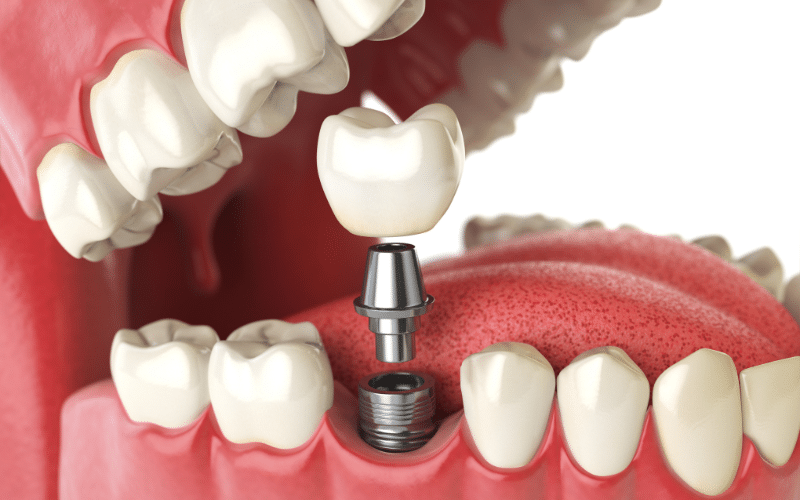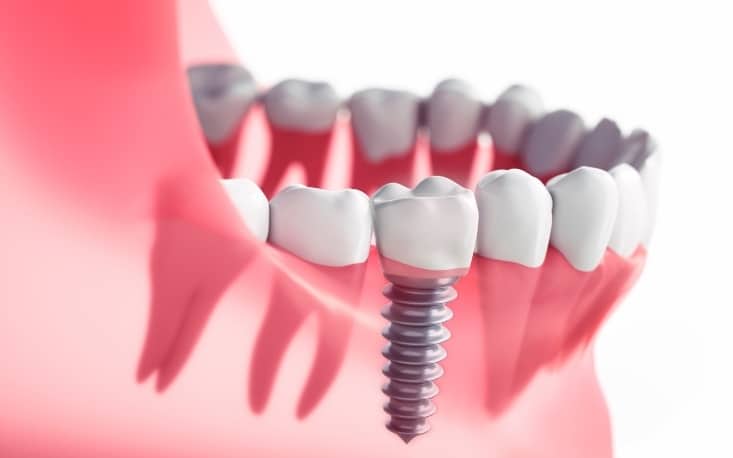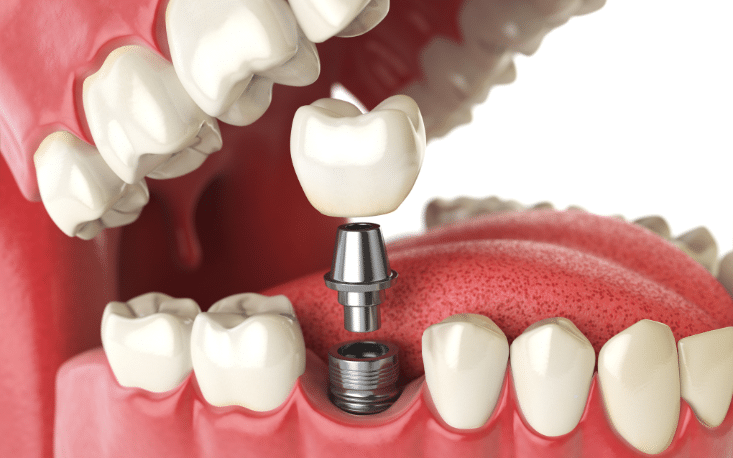ONLINE SCHEDULING AND VIRTUAL CONSULTS AVAILABLE

Bone Grafting for Dental Implants: Why It’s Necessary and What to Expect?

Picture this: you’ve made the decision to pursue dental implants in Plantation to restore your smile’s functionality and aesthetics. But wait—your dentist mentions bone grafting as a necessary step before implant placement. What exactly does this entail? Why is it necessary, and what can you expect from the process?
Bone grafting might sound daunting, but fear not! In this guide, we’ll break down everything you need to know about bone grafting for dental implants. Whether you’re already considering implants or simply curious about oral health procedures, understanding the ins and outs of bone grafting can empower you to make informed decisions about your dental care.
From exploring why bone grafting is essential for implant success to demystifying the procedure itself, we’ll provide insights that resonate with anyone embarking on their journey to a healthier, more confident smile.
Understanding Bone Grafting
Bone grafting is a fundamental procedure in implant dentistry aimed at augmenting bone volume in areas where it’s insufficient to support dental implants in Plantation. It’s like laying the groundwork for a sturdy foundation, ensuring the success and longevity of dental implant restorations. Let’s delve into the intricacies of bone grafting and the various materials used in this transformative procedure.
Definition and Mechanism:
Bone grafting involves the transplantation or addition of bone tissue to a deficient area to stimulate new bone growth. The process kickstarts the body’s natural healing response, promoting the formation of new bone cells and integrating the graft material with existing bone tissue.
Types of Bone Graft Materials:
- Autografts: Autografts involve harvesting bone tissue from the patient’s own body, typically from areas like the hip or jaw.
- Allografts: Allografts utilize donor bone tissue sourced from cadavers or tissue banks, which are processed to remove cellular components while preserving the bone’s structural integrity.
- Synthetic Grafts: Synthetic bone graft materials are biocompatible substances engineered to mimic the properties of natural bone, such as calcium phosphate or hydroxyapatite-based materials.
Benefits and Considerations
- Autografts offer the advantage of using the patient’s own bone tissue, minimizing the risk of rejection or allergic reactions.
- Allografts provide a readily available source of bone tissue without the need for additional surgery to harvest donor tissue, reducing patient morbidity.
- Synthetic grafts offer versatility and customization options, allowing clinicians to tailor the graft material to the specific needs of each patient.
Surgical Techniques:
The choice of bone graft material and surgical technique depends on factors such as the extent of bone loss, the location of the graft site, and the patient’s overall health. Common surgical techniques include socket preservation, ridge augmentation, and sinus lifts, each addressing specific bone deficiencies to optimize implant placement.
Indications for Bone Grafting
Bone grafting plays a vital role in various scenarios where the existing bone volume is inadequate to support dental implants. Understanding the indications for bone grafting is essential for clinicians to assess the need for augmentation and ensure successful implant outcomes for patients.
After Tooth Extraction:
Following tooth extraction, the surrounding bone may undergo resorption, leading to a reduction in bone volume. Bone grafting at the extraction site helps preserve the bone ridge’s dimensions and prevent future bone loss, facilitating implant placement in the future.
Following Periodontal Disease:
Periodontal disease can cause significant bone loss around the teeth, compromising the support structures needed for implant placement. Bone grafting procedures can regenerate lost bone tissue, restoring the bone’s integrity and creating a stable foundation for dental implants.
Cases of Bone Resorption:
Bone resorption, often seen in edentulous areas or areas with long-standing tooth loss, results in diminished bone volume. Bone grafting replenishes lost bone tissue, addressing the underlying bone deficiencies and allowing for successful implant placement.
Thorough Evaluation and Treatment Planning:
Thorough evaluation by a skilled implant dentist is crucial to assess the extent of bone loss and determine the need for bone grafting. Treatment planning involves considering factors such as the patient’s overall health, aesthetic concerns, and functional requirements to formulate an individualized treatment approach.
By recognizing these common scenarios and emphasizing the importance of comprehensive evaluation and treatment planning, clinicians can effectively identify the need for bone grafting and optimize the success of dental implants in Plantation for their patients.
The Bone Grafting Procedure
The bone grafting procedure is a meticulously orchestrated process that involves several steps aimed at augmenting bone volume and preparing the site for successful dental implant placement. Let’s walk through the key stages of the bone grafting journey, from initial consultation to graft placement.
Initial Consultation and Imaging
- The process begins with a comprehensive consultation where the dentist evaluates the patient’s oral health, bone structure, and treatment goals.
- Advanced imaging techniques such as X-rays, CT scans, or cone beam computed tomography (CBCT) are utilized to assess bone quality, quantity, and anatomical considerations.
Surgical Techniques
- Socket Preservation: This technique involves placing graft material into the extraction socket immediately after tooth extraction to preserve the bone ridge’s dimensions.
- Sinus Lifts: In cases where the maxillary sinus is enlarged and encroaches on the upper jaw’s bone volume, a sinus lift procedure may be performed to lift the sinus membrane and place bone graft material in the sinus cavity.
- Ridge Augmentation: Ridge augmentation involves building up the height and width of the jawbone to create a stable foundation for dental implants, typically using bone grafts and barrier membranes.
Graft Placement
During the surgical procedure, the dentist carefully places the bone graft material into the deficient area, ensuring optimal contact with the existing bone. The graft material serves as a scaffold for new bone growth, gradually integrating with the surrounding bone tissue over time.
Healing and Integration
Following graft placement, the patient undergoes a period of healing, during which new bone cells begin to grow and integrate with the graft material. Over several months, the bone graft consolidates and becomes fully integrated with the surrounding bone, providing a stable foundation for dental implant placement.
By understanding the steps involved in the bone grafting procedure and the various surgical techniques available, patients can approach the treatment process with confidence and clarity, knowing what to expect at each stage of their journey with dental implants in Plantation.
Integration with Dental Implants
The integration of bone grafts with dental implants in Plantation is a crucial phase in the journey toward restoring a healthy and functional smile.
Timeline for Bone Healing and Integration
- After bone grafting, the initial healing phase begins, during which the graft material stimulates new bone growth.
- Over the course of several months, the bone graft integrates with the surrounding bone tissue, gradually becoming stronger and more stable.
- The timeline for integration with dental implants typically ranges from four to six months for the lower jaw and six to nine months for the upper jaw, depending on individual healing rates and bone quality.
Role of Successful Bone Grafting
- Successful bone grafting provides the necessary bone volume and density to support dental implants.
- The graft material acts as a scaffold for new bone formation, facilitating osseointegration—the fusion of implants with the surrounding bone.
- By creating a stable foundation, bone grafting ensures the longevity and stability of dental implant restorations, allowing for predictable and durable outcomes.
Understanding the timeline for bone healing and the critical role of successful bone grafting sets realistic expectations for patients undergoing dental implant treatment.
Bone grafting lays the groundwork for successful dental implant treatment, ensuring stability and longevity for restored smiles. Whether you’re considering dental implants in Plantation or seeking to enhance your oral health, understanding the importance of bone grafting empowers informed decisions and optimal outcomes.





